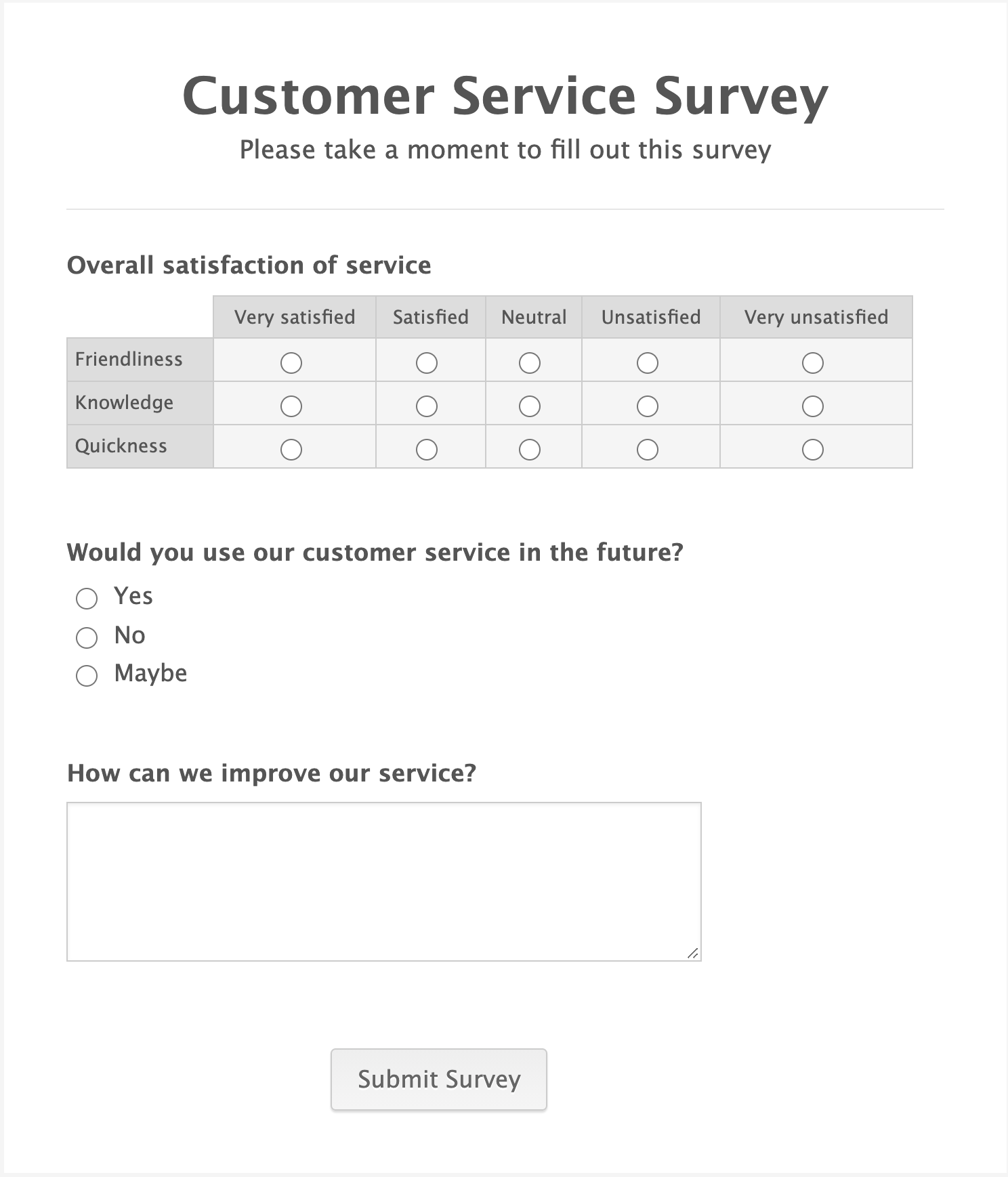5 customer satisfaction metrics
A happy customer tends to be a long-term customer who contributes positively to the bottom line. In fact, 84 percent of companies that make an effort to improve the customer experience report increases in revenue. This dynamic makes sense — after all, people favor brands that make them feel valued.
But how do you know whether customers are happy? There are plenty of ways to figure this out, yet tracking several key metrics will help you avoid the guesswork. Keep reading to learn about customer satisfaction metrics that can give you the customer insights you need.
Gauge happiness with these 5 customer satisfaction metrics
1. Customer service satisfaction (CSS)
“As the name implies, CSS looks at how satisfied customers are with your service,” says Jacob Dayan, cofounder and CMO of Community Tax. “Service” typically refers to one-on-one interactions between customers and representatives of the business.
According to Dayan, “this is one of several customer satisfaction metrics any business should be tracking to ensure they properly gauge the happiness level of their customers.”
Dayan notes that CSS doesn’t measure overall satisfaction since it’s usually based on a particular interaction a customer has with your team. However, CSS can give you some great insight into how you’re handling specific customer-facing areas of your business.
“You can easily and consistently measure CSS through live chats, brief questionnaires, and the occasional email survey — all of which can be automated,” he says.
2. Net Promoter Score (NPS)
NPS measures customer experience, loyalty, and brand perception; it also predicts business growth. To be specific, NPS looks at how likely a past client is to recommend your business to others.
“Word of mouth is one of the most powerful and highest converting marketing tactics,” says Dayan.
“NPS can be tracked in a similar manner to CSS through automated chatbot questionnaires, email surveys, and so forth, making it easy to collect and analyze data,” he explains. “While it doesn’t tell you the why behind a customer’s score, it can give you a high-level indication of how your customers feel about your business.”
3. Customer churn
Customer churn — also referred to as customer attrition or turnover — is a measure of how many customers stop purchasing or subscribing to your products or services in a given time frame.
Chris Bolz, founder of Retail CRM Cloud, says tracking churn is critical for software-as-a-service (SaaS) companies. “SaaS companies like ours generate revenue from customers using recurring payment plans. We see immediate impact when a customer unsubscribes or doesn’t renew their plan.”
Bolz says keeping an eye on churn helps his team uncover patterns that are likely affecting customer satisfaction. By analyzing churn trends, his team can identify different initiatives within the company that have had an impact on customer satisfaction.
“Combining an understanding of why churn is happening with an agile approach enables us to quickly adjust our efforts to improve our customer satisfaction and retain more customers,” Bolz says.
4. The time to resolve customer complaints
Customer complaints are inevitable, even if you go above and beyond to provide amazing products and services. That’s why William Taylor, senior recruitment advisor at VelvetJobs, says it’s important to keep track of complaints and resolve them as soon as possible to avoid a dip in customer satisfaction.
Taylor notes that you should track complaints from the moment you receive them until your team fully resolves them. How long does it take on average to fully address a given complaint — minutes, days, weeks? The quicker you take care of a complaint, the better off you’ll be.
How many complaints can your team typically handle per day? The more they can take on, the higher the number of satisfied customers you’ll have.
“As your customer service team’s efficiency increases, so does customer satisfaction,” says Taylor. “This helps build great business-customer relationships. Plus, this metric can indicate how well your team is performing, which can inform your decision-making regarding employee hiring and training.”
5. Online reviews
Marc Bromhall, founder of Surf Gear Lab, has found that online reviews — both on his company’s website and third-party review sites like Trustpilot and Yelp — give him a pretty accurate measure of customer satisfaction for his business.
“People are far more willing to give a bad review over a good one,” he explains. “With this in mind, our goal is to have as close to zero negative customer reviews as possible.”
In addition to tracking online reviews, Bromhall also uses NPS. Combining these two customer satisfaction metrics provides insight into the overall customer experience and products his company sells. “With data from these two metrics, we can make informed decisions on how we can improve these two areas,” he says.You can use any (or all) of the above metrics to develop a full view of your customers — and you can easily measure their satisfaction with Jotform. Get started today with one of hundreds of prebuilt survey templates.
Net Promoter®, NPS®, NPS Prism®, and the NPS-related emoticons are registered trademarks of Bain & Company, Inc., NICE Systems, Inc., and Fred Reichheld. Net Promoter ScoreSM and Net Promoter SystemSM are service marks of Bain & Company, Inc., NICE Systems, Inc., and Fred Reichheld.






















Send Comment: